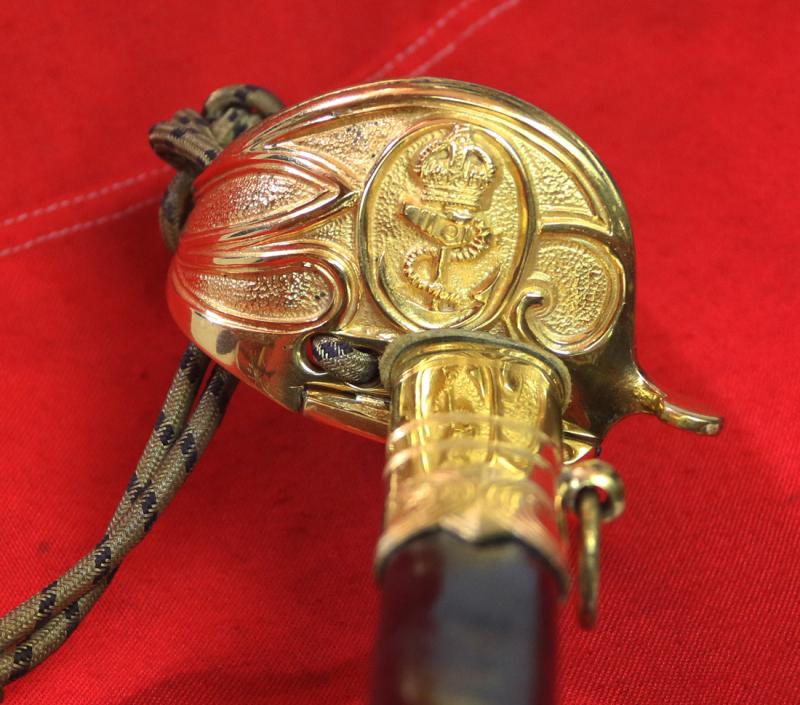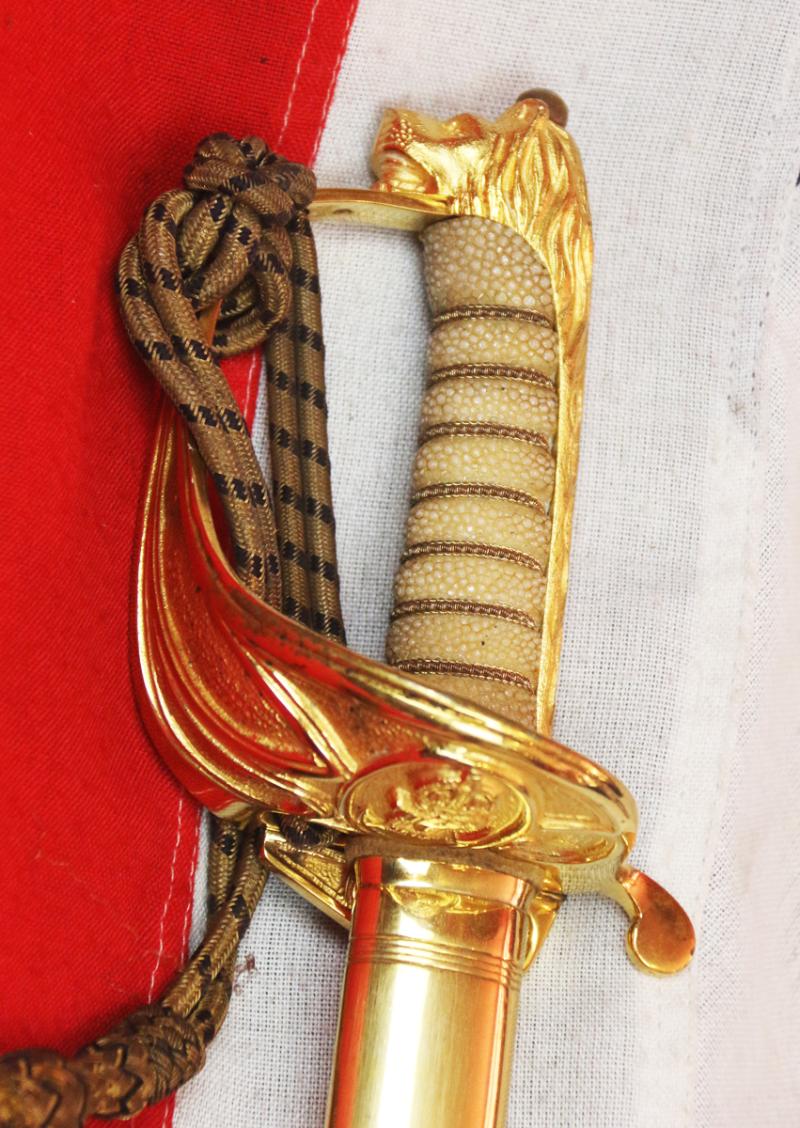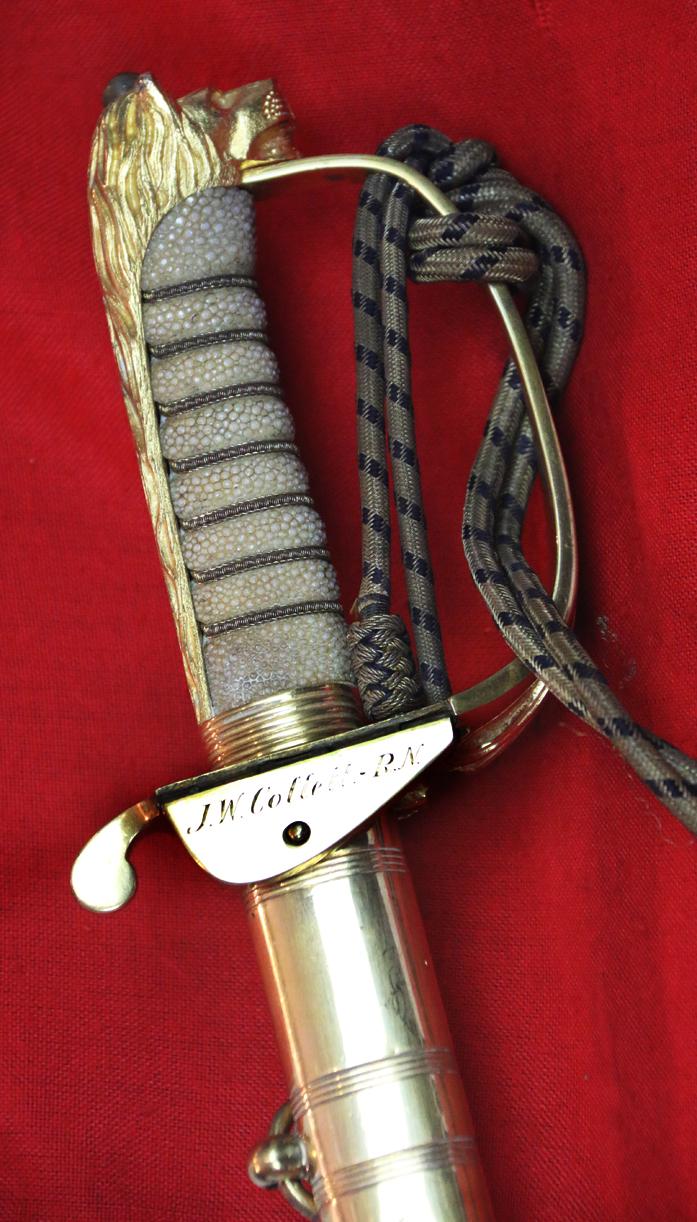A Very Good WW1 & WW2 Royal Naval Officer's Sword with Service Knot
Made and used in WW1 and WW2, yet perfectly serviceable for current service.
Near mint gilt, fully etched blade with traditional anchor and the King George Vth cypher.
The original Royal Naval sword was designed in 1805, although elegant in design it proved impractical and was replaced in 1827 by the solid hilt variant. In 1846 the Royal Naval blade was standardised for all Royal Naval officers, with the current lighter, straight single-edged blade being commissioned into service in 1929.
During World War I, the Royal Navy's strength was mostly deployed at home in the Grand Fleet, confronting the German High Seas Fleet across the North Sea. Several inconclusive clashes took place between them, chiefly the Battle of Jutland in 1916. The British fighting advantage proved insurmountable, leading the High Seas Fleet to abandon any attempt to challenge British dominance. The Royal Navy played an important role in securing the British Isles and the English Channel, notably ferrying the entire British Expeditionary Force to the Western Front without the loss of a single life at the beginning of the war.
The Royal Navy nevertheless remained active in other theatres, most notably in the Mediterranean Sea, where they waged the Dardanelles and Gallipoli campaigns in 1914 and 1915. British cruisers hunted down German commerce raiders across the world's oceans in 1914 and 1915, including the battles of Coronel, Falklands Islands, Cocos, and Rufiji Delta, among others
At the start of World War II in 1939, the Royal Navy was still the largest in the world, with over 1,400 vessels. The Royal Navy provided critical cover during Operation Dynamo, the British evacuations from Dunkirk, and as the ultimate deterrent to a German invasion of Britain during the following four months. The Luftwaffe under Hermann Göring attempted to gain air supremacy over southern England in the Battle of Britain in order to neutralise the Home Fleet, but faced stiff resistance from the Royal Air Force. The Luftwaffe bombing offensive during the Kanalkampf phase of the battle targeted naval convoys and bases in order to lure large concentrations of RAF fighters into attrition warfare. At Taranto, Admiral Cunningham commanded a fleet that launched the first all-aircraft naval attack in history. The Royal Navy suffered heavy losses in the first two years of the war. Over 3,000 people were lost when the converted troopship Lancastria was sunk in June 1940, the greatest maritime disaster in Britain's history. The Navy's most critical struggle was the Battle of the Atlantic defending Britain's vital North American commercial supply lines against U-boat attack. A traditional convoy system was instituted from the start of the war, but German submarine tactics, based on group attacks by "wolf-packs", were much more effective than in the previous war, and the threat remained serious for well over three years
Fully etched blade with old aged pitting at the tip end now surface polished bright.
Code: 25221
695.00 GBP










